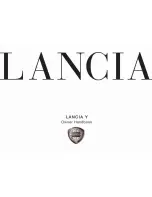
Fastening seat belts
Three-point seat belt
Example: three-point seat belt, front
X
Adjust the seat and move the backrest to
an almost vertical position (
X
Pull the seat belt smoothly from the inertia
reel.
X
Without twisting it, guide the shoulder sec-
tion of the seat belt across the middle of
your shoulder and the lap section across
your hips.
X
Engage belt tongue
;
in buckle
=
.
X
If necessary, pull upwards on the shoulder
section of the seat belt to tighten the belt
across your body.
For more information about releasing the seat
belt with release button
:
, see "Releasing
Releasing the seat belts
!
Make sure that the seat belt is fully rolled
up. Otherwise, the seat belt or belt tongue
will be trapped in the door or in the seat
mechanism. This could damage the door,
the door trim panel and the seat belt. Dam-
aged seat belts can no longer fulfil their
protective function and must be replaced.
Visit a qualified specialist workshop.
X
Press release button
:
of belt buckle
=
and guide belt tongue
;
back towards belt
sash guide.
Children in the vehicle
Child restraint systems
Important safety notes
G
WARNING
To reduce the risk of serious or even fatal
injury to the child in the event of a sudden
change in direction, braking or an accident:
R
Children less than 1.50 m tall and under
twelve years of age must always be secured
in special child restraint systems on a suit-
able vehicle seat. This is necessary
because the seat belts are not designed for
children.
R
Children must never travel sitting on the lap
of another occupant. Due to the forces
which occur in the event of a sudden
change of direction, heavy braking or an
accident, it would not be possible to
restrain the child. The child could be thrown
against parts of the vehicle interior and be
seriously or even fatally injured.
G
WARNING
The child restraint system cannot perform its
protective function if it is not correctly fitted
to a suitable vehicle seat. The child cannot be
restrained in the event of an accident, heavy
braking or sudden changes of direction. The
child could be seriously or even fatally injured.
For this reason, when fitting a child restraint
system, observe the manufacturer's installa-
tion instructions and the correct use of the
child restraint system.
Child restraint systems should be fitted to the
rear seats. Children are generally better pro-
tected there.
The entire base of the child restraint system
must always rest on the seat cushion. There-
Children in the vehicle
29
Safety
Z
Summary of Contents for G-Class
Page 1: ...G Class Owner s Manual Nur f r internen Gebrauch For internal use only...
Page 4: ......
Page 19: ...Cockpit 18 Instrument cluster 19 Centre console 21 17 At a glance...
Page 50: ...48...
Page 58: ...56...
Page 78: ...76...
Page 86: ...84...
Page 128: ...126...
Page 141: ...Useful information 140 Engine compartment 140 Service 145 Care 147 139 Maintenance and care...
Page 154: ...152...
Page 174: ...172...
Page 188: ...186...
Page 205: ...203...
Page 206: ...204...
















































